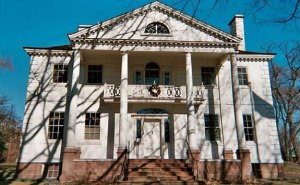
It all began with two mischievous little girls. Sisters, Maggie and Kate Fox, ages 14 + 11 came to their mother, Margaret + revealed an astonishing gift for communicating with the spirit world. It was March 31, 1848. Their small town of Hydesville, NY would never be the same.
Their gift was first demonstrated to a baffled neighbor. The two girls, snug in their bed, told of nightly visits from a spirit eager to communicate with them, answering questions through a series of “raps” on their bedroom wall.
Their mother began, “Count five raps.” The wall reverberated with the sound of five, sturdy knocks. She moved on to more advanced questions. “If you are an injured spirit, manifest it by three raps.” And so those present heard it verified that their visitor was indeed, injured.
News of this unnerving gift began to spread throughout Hydesville. Rumors circulated that the spirit could be that of a salesman who disappeared while going door-to-door, years before, never to be heard from again. (Word around town was that he had been murdered in the Fox farmhouse in 1843.)
Alarmed, the Fox family fled the house. Maggie + Kate were sent to Rochester to live with their older sister, Leah. News of their gift followed them. Soon, it was revealed that Leah, too had the gift. She was a medium who could communicate directly with spirits. Friends persuaded the sisters to demonstrate their abilities to the public. They rented a concert hall. 400 people attended, astounded by what they had witnessed: three charming girls, communicating directly with the great beyond.
Three stars were born. By 1850 the Fox sisters began their spiritual careers in earnest, holding their first sessions in Barnum’s Hotel in Manhattan. (Located at the corner of Maiden Lane + Broadway in today’s Financial District.)
People from all walks of life visited the Foxes. Even celebrities like Horace Greeley + James Fenimore Cooper couldn’t stay away. After a time, the sisters began to expand their audience. Leah, holding séances, Maggie + Kate embarking on a multi-city US tour.
Their “act” was received with equal parts skepticism + fascination. Skeptics scoffed at the authenticity of their claims, demanding examination of their clothing + requiring repeated changing of venues to try + catch them in their trickery. Believers clung desperately to the idea that the sisters could provide the opportunity to communicate with dear, departed loved ones. “The Spiritual Knockers From Rochester” as they became known, were on a roll.
Despite this split in public opinion, their mother, Margaret whole-heartedly believed in their abilities. She accompanied them to Manhattan to watch over them + to see to it that the girls made good matches. In time, Maggie, Kate + Leah each married. (Maggie, notably to the American, Arctic explorer Elisha Kent Kane.)
By Kane’s urging, Maggie Fox left the family business + converted to Catholicism, promising to give it up for good. A decade of questionable fame had begun to take its toll on her. Following Kane’s untimely death in 1857, Maggie began to drink.
Kate, on the other hand, dove headlong into refining her craft. Going so far as to claim to make contact with the spirit of Benjamin Franklin, she developed carnival style dramatics, learning to “simultaneously” translate messages from the beyond, speaking one message while writing another. The unending deception eventually drove Kate to drink, too.
Tensions grew among the Foxes. Leah began to publicly criticize Kate. Maggie was tired of lying. On October 21, 1888 after 40 years of fame by sleight of hand, Maggie took the stage at The New York Academy of Music. She confessed to the 2,000 people in attendance: their act had been a sham. Maggie removed her shoes + demonstrated how they had done it all those years.
They were only little girls when they started. They learned to crack their toes + other joints to simulate the “knockings.” They could do this imperceptibly, the sound carried well, the phenomenon was portable. It was Leah Fox who had exploited them. Once in the public eye, they could not turn back.
Within five years of Maggie’s confession, the three Fox sisters were dead. They died in poverty.
Curiously, the Fox Farmhouse in Hydesville was demolished in 1904. Inside the wall of that fateful, tiny bedroom lay the skeleton of a man believed to be the missing traveling salesman.







